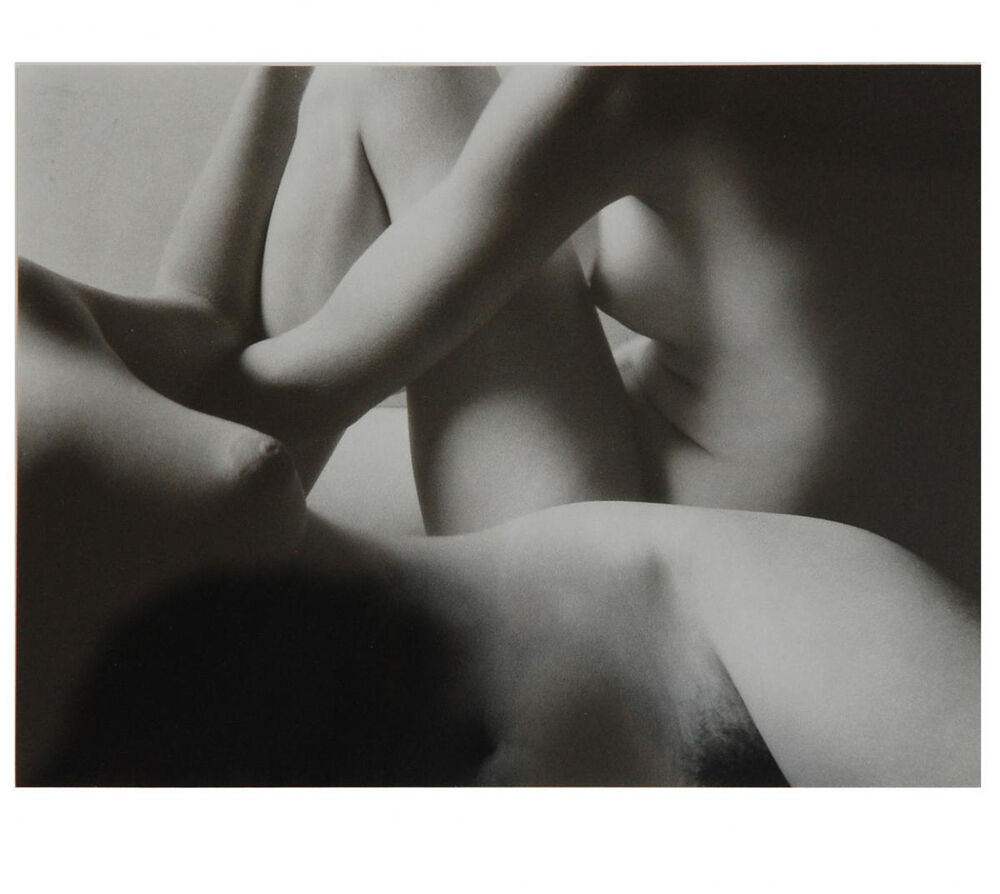
Triangles plus one, 1928
Imogen Cunningham
1883 - 1976
Silver Gelatin Print. 14.5 x 19 cm.
Om fotografen
Imogen Cunningham (1883 – 1976) was an American photographer known for her botanical photography, nudes, and industrial landscapes. In 1901, Cunningham bought her first camera, a 4x5 inch view camera, but it wasn't until 1906 that she was inspired to take up photography by an encounter with the work of Gertrude Käsebier. With the help of her chemistry professor, Horace Byers, she began to study the chemistry behind photography and she subsidized her tuition by photographing plants for the botany department.
In 1907, Cunningham finished her thesis entitled “Modern Processes of Photography.” In 1907 she worked for Edward S. Curtis in his Seattle studio, gaining knowledge about the portrait business and practical photography. In 1909, Cunningham won a fellowship which she used in Germany studying with Professor Robert Luther at the Technische Hochschule, Dresden. She finished her paper in 1910: "About the Direct Development of Platinum Paper for Brown Tones", describing her process to increase printing speed, improve clarity of highlights tones, and produce sepia tones.
On her way back to Seattle she met Alvin Langdon Coburn in London, and Alfred Stieglitz and Gertrude Käsebier in New York. In Seattle, Cunningham opened a studio and won acclaim for portraiture and pictorial work. In 1914, Cunningham's portraits were shown at An International Exhibition of Pictorial Photography in New York and Wilson's Photographic Magazine published a portfolio of her work. In 1932, Cunningham co-founded the Group f/64, which was named for a large-format camera’s smallest aperture setting. Alas known for its dedication to the sharp-focus rendition of simple subjects. The group included Ansel Adams, John Paul Edwards, Sonya Noskowiak, Henry Swift, Willard Van Dyke and Edward Weston. In 1934, Cunningham was invited to do some work in New York for Vanity Fair, in the 1940s, Cunningham turned to documentary street photography, which she executed as a side project while supporting herself with her commercial and studio photography.
-
Founded in the 1930s, Group f.64 was a group of eleven photographers, including Ansel Adams, Imogen Cunningham and Edward Weston, who were united by their desire to photograph life as it really is. Characterised by a clear, sharp-focus aesthetic, their style was at odds with the romantic methods of manipulating images during or after printing, fashionable at the time. Instead they focused on accurately exposed images of natural forms and found objects.
As cameras became more sophisticated, different effects could be achieved quite simply. By closing the aperture on the lens (like the iris of an eye), the focus of a picture was sharpened. The name f.64 refers to the smallest aperture on a camera, used by the group because it provided the greatest depth of field, allowing for much of the photograph to be in sharp focus. Perhaps the overarching vision of the group was their belief in the camera as a passive observer of the world, better able to depict life as it really was because it did not project personal prejudices.
Imogen Cunningham